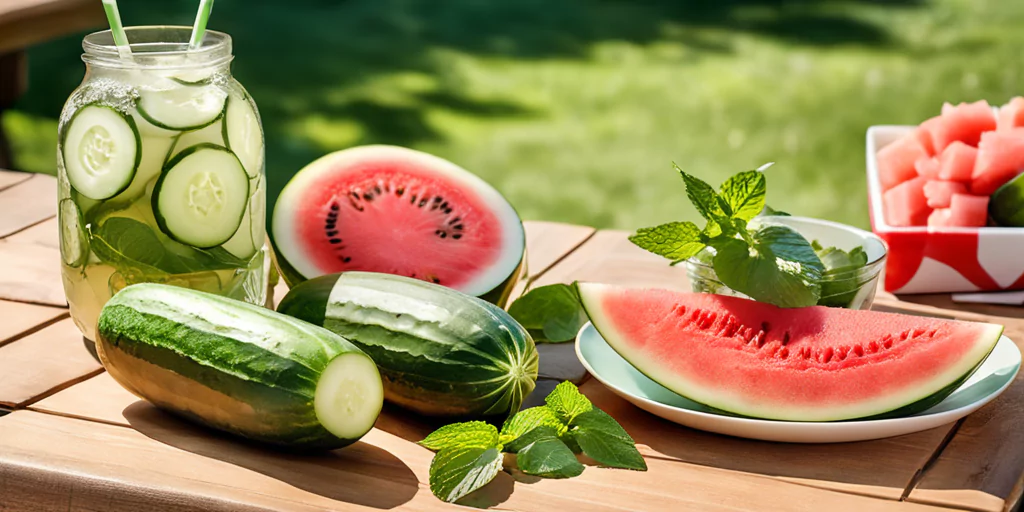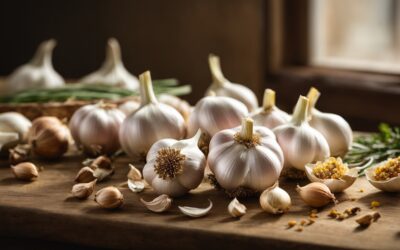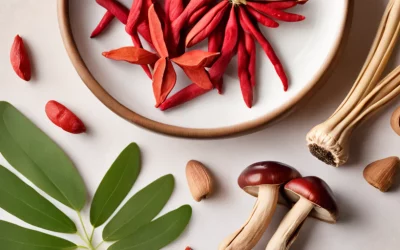Understanding the concept of cooling foods in Traditional Chinese Medicine (TCM) is essential for maintaining overall health. Incorporating cooling foods into your diet can help balance excess heat in the body and promote well-being. In TCM, food is classified based on its energetic properties and its influence on the body’s constitution. Cooling foods have characteristics that help reduce heat and dampness, which are often associated with symptoms such as inflammation, anxiety, and high blood pressure.
By incorporating cooling foods into your diet, you can experience various benefits, including improved digestion, reduced inflammation, and a sense of calmness. Some examples of cooling foods include watermelon, cucumber, green tea, and mung beans. These foods not only provide hydration but also help cool down the body during hot seasons or when experiencing signs of excess heat.
We will discuss their properties, their effects on the body, and ways to incorporate them into your daily meals.
- The Energy of Foods in Chinese Medicine
- What are cooling foods?
- Cooling Foods to Help Balance Excess Heat
- Cooling vegetables
- Cooling fruits
- Cooling legumes & grains
- What Does the Research Say?
- Conclusion
- FAQs
The Energy of Foods in Chinese Medicine
In Chinese Medicine, food is not just about satisfying hunger; it is believed to have a profound impact on our overall well-being. Traditional Chinese Medicine (TCM) takes into account the energetic properties of food and how they can affect our physical and emotional health.
TCM’s Perspective on Food Energy
According to TCM, every food has an inherent energy or “qi” that can either warm or cool the body. This energy is classified as either yin or yang. Yin foods are considered cooling, while yang foods are warming. The balance between these energies is crucial for maintaining harmony within the body.
Differentiating between Warming and Cooling Properties
In TCM, foods are categorized based on their thermal nature rather than their actual temperature when consumed. For example, watermelon may be cold to touch but has a cooling effect on the body due to its yin properties. On the other hand, ginger may be warm to touch but has a warming effect due to its yang properties.
Some commonly recognized cooling foods in TCM include cucumber, lettuce, spinach, and mung beans. These foods are believed to help clear heat from the body and promote balance. Warming foods such as ginger, garlic, cinnamon, and lamb are thought to strengthen digestion and circulation.
How Food Energy Affects Our Well-being
The energetic properties of food play a vital role in maintaining optimal health according to TCM principles. When we consume cooling foods during hot summer months or when experiencing symptoms of excess heat like inflammation or feverishness, they can help bring balance by reducing internal heat.
On the other hand, consuming warming foods during colder seasons or when feeling cold can help improve circulation and provide warmth to the body. It is important to note that individual constitution also plays a role in determining which types of foods are beneficial for each person.
TCM also emphasizes that emotions have an impact on our well-being. Certain foods are believed to have an effect on our emotional state as well. For example, cooling foods may be recommended for individuals who tend to feel hot-tempered or easily agitated, while warming foods may benefit those who often feel cold or lethargic.
Incorporating a balanced mix of warming and cooling foods into our diet can help maintain harmony within the body and support overall health and vitality. It is important to consult with a qualified TCM practitioner or nutritionist to understand your individual needs and create a personalized diet plan.
What are cooling foods?
Definition and characteristics of cooling foods according to TCM principles
Cooling foods, as defined by Traditional Chinese Medicine (TCM) principles, are a category of foods that possess energetic properties that help to cool down the body. According to TCM, these foods have a cooling effect on the body’s internal temperature and can help balance excessive heat or “yang” energy. They are believed to have a yin nature, which helps counteract any excess yang energy in the body.
In TCM, the concept of yin and yang is central to understanding health and balance. Yin represents coolness, moisture, and quietness, while yang represents warmth, dryness, and activity. When there is an imbalance between yin and yang energies in the body, it can lead to various health issues. Cooling foods play a crucial role in rebalancing these energies by providing a cooling effect.
Examples of common cooling foods found in nature
Nature offers us an abundance of cooling foods that can help regulate our body temperature and promote overall well-being. Some examples of commonly consumed cooling foods include:
- Watermelon: This juicy fruit is not only delicious but also highly hydrating and refreshing. It has a high water content that helps cool down the body during hot weather.
- Cucumber: With its high water content and crisp texture, cucumber is known for its cooling properties. It can be enjoyed in salads or infused into water for a refreshing beverage.
- Mint: Known for its refreshing aroma and flavor, mint leaves are often used in teas or added to dishes for their cooling effects on the body.
- Coconut water: A natural electrolyte-rich drink obtained from young coconuts, coconut water provides hydration while simultaneously helping to cool down the body.
- Green leafy vegetables: Vegetables like spinach, lettuce, and kale have a naturally cooling effect on the body due to their high water content and nutrient density.
Identifying the energetic properties that make certain foods “cooling”
The energetic properties of cooling foods can be identified by their taste, color, and effects on the body. In TCM, foods that are considered cooling tend to have a sweet or bitter taste and are often associated with colors like green or blue. These foods are believed to clear heat from the body, promote detoxification, and soothe inflammation.
Cooling foods also possess specific qualities that help regulate body temperature.
Cooling Foods to Help Balance Excess Heat
Highlighting Specific Types of Cooling Foods
Incorporating cooling foods into your diet can be highly beneficial. These foods have properties that help balance out the heat and bring a sense of coolness to your system. From herbs and vegetables to fruits, legumes, and grains, there are various options available for you to choose from.
Herbs: Nature’s Cooling Agents
Herbs such as mint, cilantro, and dill are known for their cooling properties. They not only add flavor to your dishes but also help in reducing excessive heat in the body. Adding these herbs to salads or using them as garnishes can provide a refreshing touch while aiding in maintaining a balanced temperature.
Vegetables: A Fresh Approach
Certain vegetables possess natural cooling properties that can help lower the heat in your body. Cucumbers, celery, lettuce, and zucchini are excellent choices. These vegetables are hydrating and contain high water content, which contributes to their ability to cool down the body.
Fruits: Sweet Relief
Fruits like watermelon, strawberries, oranges, and pineapple are not only delicious but also have cooling effects on the body. Their high water content helps keep you hydrated while providing essential nutrients. Including these fruits in your diet can offer a sweet relief from excess heat.
Legumes: A Protein-Packed Option
Legumes such as lentils and mung beans are not only rich sources of protein but also possess cooling properties according to Traditional Chinese Medicine (TCM). Incorporating these legumes into soups or salads can provide a nutritious addition while helping balance out any excess heat in the body.
Grains: A Wholesome Choice
In TCM, certain grains like barley and millet are considered cooling foods that aid in reducing heat. These grains can be used in various dishes, including porridge or as a substitute for rice. They not only provide a wholesome option but also contribute to maintaining a balanced body temperature.
Diversify Your Diet
To optimize the benefits of cooling foods, it is essential to diversify your diet with different flavors and textures. By incorporating a variety of cooling foods into your daily meals, you can ensure that you are getting a wide range of nutrients while keeping your body cool and balanced.
Cooling vegetables
Listing various vegetables known for their natural cooling properties
Vegetables play a crucial role. Certain vegetables are known for their natural cooling properties, helping to balance excess heat in the body. Incorporating these veggies into your diet can be a refreshing way to beat the summer heat and maintain overall well-being.
Some of the top cooling vegetables include cucumber, celery, lettuce, radish, and bitter gourd. These veggies are not only hydrating but also have a cooling effect on the body due to their high water content and specific properties.
Exploring how these vegetables can be prepared and incorporated into dishes
Cucumber is perhaps one of the most popular cooling vegetables. It contains about 96% water, making it incredibly hydrating. Sliced cucumbers can be added to salads or enjoyed as a snack. You can also prepare refreshing cucumber-infused water by adding slices of cucumber to a pitcher of water and leaving it in the refrigerator for a few hours.
Celery is another fantastic option. It has a high water content as well as essential electrolytes that help keep you hydrated. Enjoy celery sticks with hummus or add chopped celery to stir-fries or soups for an extra crunch and freshness.
Lettuce is not just great for salads but also offers a cooling effect on the body. Whether you opt for romaine lettuce, iceberg lettuce, or butterhead lettuce, they all provide hydration and contribute to balancing excess heat in the body. Create delicious salads with mixed greens or use large lettuce leaves as wraps for fillings like grilled chicken or tofu.
Radishes come in various colors and shapes and are known for their cooling properties too. They add a crisp texture and peppery flavor to dishes while providing hydration benefits. Add sliced radishes to salads or pickle them with vinegar and spices for a tangy and refreshing side dish.
Bitter gourd, also known as bitter melon, is a vegetable commonly used in Asian cuisine. Despite its slightly bitter taste, it is highly regarded for its cooling effects. Bitter gourd can be stir-fried with other vegetables or stuffed and cooked to create a flavorful dish that helps cool the body.
Vegetable | Cooling Properties | Taste | Effect on Body |
|---|---|---|---|
Cucumber | Cooling | Sweet and bitter | Hydrating |
Tomato | Cooling | Sweet and sour | Detoxifying |
Celery | Cooling | Bitter | Diuretic |
Spinach | Cooling | Bitter | Nourishing |
Lettuce | Cooling | Bitter | Cleansing |
Radish | Cooling | Spicy | Digestive aid |
Zucchini | Cooling | Mild | Anti-inflammatory |
Eggplant | Cooling | Bitter | Detoxifying |
Bitter gourd | Cooling | Bitter | Blood purifying |
Winter melon | Cooling | Mildly sweet | Diuretic |
Bamboo shoots | Cooling | Mild | Detoxifying |
Cooling fruits
Cooling fruits can be your best friends. These refreshing fruits not only taste delicious but also possess natural coolant effects that can help cool down your body in hot weather. Let’s explore some of these cooling fruits and discuss how you can enjoy them to maximize their beneficial effects.
Identifying Refreshing Fruits with Natural Coolant Effects
- Watermelon: This juicy fruit is a summertime favorite for many. With its high water content and natural sweetness, watermelon is not only hydrating but also has a cooling effect on the body. It helps in reducing body heat and quenching thirst.
- Pear: Pears are not only crunchy and delicious but also have a cooling nature according to Traditional Chinese Medicine (TCM). They are known for their ability to clear heat from the body and soothe dryness, making them an excellent choice during hot summer days.
- Coconut Water: This tropical drink is not only refreshing but also packed with electrolytes that help replenish fluids in the body. Coconut water is known for its cooling properties and can be a great way to stay hydrated while enjoying a burst of flavor.
Ways to Enjoy Cooling Fruits
Now that we know which fruits have natural coolant effects, let’s discuss how we can enjoy them to beat the heat:
- Fresh: One of the simplest ways to enjoy these cooling fruits is by eating them fresh. Slice up some watermelon or bite into a juicy pear for an instant refreshment.
- Juices: If you prefer sipping on something cold, try making fresh fruit juices using these cooling fruits as the main ingredients. Blend watermelon chunks or pears with some ice cubes for a chilled and revitalizing beverage.
- Smoothies: Another option is to blend these fruits into smoothies along with other ingredients like yogurt or coconut milk for added creaminess and flavor. This way, you can create a nutritious and cooling drink that will keep you refreshed throughout the day.
Remember to avoid adding warming ingredients like dairy or hot-natured spices such as peppermint, as they may counteract the cooling effects of these fruits.
Fruit | Cooling Properties | Taste | Effect on Body |
|---|---|---|---|
Watermelon | Very cooling | Sweet | Hydrating |
Pineapple | Cooling | Sweet and sour | Aids digestion |
Mango | Cooling | Sweet | Quenches thirst |
Citrus fruits | Cooling | Sour | Refreshing |
Kiwi | Cooling | Sour | Promotes digestion |
Pear | Cooling | Sweet and sour | Moisturizing |
Grapes | Cooling | Sweet | Nourishes blood |
Coconut | Cooling | Sweet | Replenishes fluids |
Banana | Cooling | Sweet | Nourishes yin |
Apple | Cooling | Sweet and sour | Clears heat |
Cooling legumes & grains
Legumes and grains can be a great addition to your diet if you’re looking for cooling foods according to Traditional Chinese Medicine (TCM). These ingredients have properties that can help cool down the body and balance its internal heat. Let’s explore some popular legumes and grains that are known for their cooling effects.
Mung Beans
Mung beans are one of the most commonly used legumes in TCM for their cooling properties. They are packed with essential nutrients like dietary fiber, protein, and vitamins. Mung beans are believed to promote detoxification, reduce inflammation, and aid digestion. You can incorporate mung beans into your diet by making delicious bean soups or sprouting them for salads.
Adzuki Beans
Adzuki beans are another cooling legume that is widely used in Asian cuisine. These small red beans are rich in dietary fiber, which helps regulate bowel movements and supports digestive health. Adzuki beans also contain antioxidants that help fight free radicals in the body. Consider adding adzuki beans to your diet by making sweet red bean paste or incorporating them into stews and curries.
Barley
Barley is a versatile grain with cooling properties that make it an excellent choice for hot summer days. It is high in dietary fiber, which aids digestion and promotes satiety. Barley also contains vitamins and minerals like magnesium and selenium, which support overall health. You can enjoy barley by cooking it into a refreshing grain salad or using it as a base for hearty porridges.
Delicious Recipes Incorporating Cooling Legumes & Grains
Now that we’ve highlighted some cooling legumes and grains let’s explore how you can incorporate them into delicious recipes:
- Bean Soup: Cook mung beans or adzuki beans with vegetables like carrots, celery, and onions to create a nourishing soup that cools you down on hot days.
- Grain Salad: Combine cooked barley with fresh vegetables like cucumbers, tomatoes, and herbs to make a refreshing grain salad. Drizzle it with a light dressing for added flavor.
- Porridge: Cook barley or mung beans into a creamy porridge by simmering them in water or plant-based milk. Add your favorite toppings like fruits, nuts, or honey to enhance the taste.
Remember to experiment with different flavors and ingredients to find combinations that suit your taste buds while keeping you cool during warm weather.
Legumes & Grains | Cooling Properties | Benefits |
|---|---|---|
Mung Beans | Cooling | Helps detoxify the body, aids digestion, and promotes weight loss. |
Lentils | Cooling | Supports digestion, reduces inflammation, and boosts energy levels. |
Adzuki Beans | Cooling | Enhances kidney function, improves circulation, and reduces swelling. |
Black Beans | Cooling | Supports kidney health, strengthens bones, and improves cardiovascular health. |
Chickpeas | Cooling | Promotes heart health, regulates blood sugar levels, and aids in weight management. |
Quinoa | Cooling | High in protein, supports digestion, and helps maintain healthy blood sugar levels. |
Barley | Cooling | Supports digestion, reduces cholesterol levels, and promotes healthy skin. |
Brown Rice | Cooling | Rich in fiber, supports healthy digestion, and provides sustained energy. |
Millet | Cooling | Supports cardiovascular health, aids digestion, and helps maintain healthy blood sugar levels. |
Buckwheat | Cooling | Improves blood circulation, supports heart health, and aids in weight management. |
What Does the Research Say?
Scientific Studies on the Effects of Cooling Foods in TCM
Scientific research has delved into understanding the effects of cooling foods in Traditional Chinese Medicine (TCM). Several studies have explored the potential therapeutic benefits of consuming cooling foods and their impact on various aspects of health.
One study published in a reputable journal investigated the effects of cooling foods on blood pressure. The researchers found that participants who consumed a diet rich in cooling foods experienced a significant decrease in systolic and diastolic blood pressure levels. This suggests that incorporating these foods into one’s diet may help manage hypertension.
Another study examined the anti-inflammatory properties of cooling foods. The researchers discovered that certain compounds present in these foods exhibited potent anti-inflammatory effects, reducing markers of inflammation in the body. This finding highlights how consuming cooling foods can potentially alleviate inflammatory conditions.
Compounds Contributing to Therapeutic Benefits
The therapeutic benefits associated with cooling foods can be attributed to specific compounds found within them. For instance, many fruits and vegetables classified as cooling are rich in antioxidants, such as vitamin C and flavonoids. These antioxidants help combat oxidative stress, reduce inflammation, and support overall cellular health.
Certain herbs commonly used as cooling ingredients contain bioactive compounds with unique properties. For example, mint leaves contain menthol, which not only imparts a refreshing taste but also possesses analgesic properties that can provide relief from headaches or muscle pain.
Moreover, some studies have highlighted the role of polysaccharides present in mushrooms classified as cooling. These polysaccharides exhibit immunomodulatory effects, enhancing immune function and potentially protecting against certain diseases.
Limitations and Future Directions for Research
While scientific research has shed light on the potential benefits of consuming cooling foods within TCM, it is important to acknowledge some limitations. Many studies conducted thus far have been small-scale or focused on animal models rather than human subjects. Therefore, more extensive research involving larger sample sizes and human trials is needed to validate these findings.
Furthermore, the mechanisms through which cooling foods exert their therapeutic effects require further exploration. Understanding the specific interactions between bioactive compounds in these foods and physiological processes will contribute to a more comprehensive understanding of their health benefits.
Conclusion
In conclusion, cooling foods play a crucial role in Traditional Chinese Medicine (TCM) by helping to balance excess heat in the body. As discussed in this article, cooling foods are believed to have energetically cooling properties, which can help alleviate symptoms of heat-related imbalances. Cooling vegetables, fruits, legumes, and grains are all excellent options to incorporate into your diet for their cooling effects.
While TCM has a long history of using cooling foods to support overall health and well-being, it is important to note that scientific research on the specific effects of these foods is still limited. Therefore, it is recommended to consult with a qualified TCM practitioner or healthcare professional before making any significant dietary changes.
By understanding the energetics of food and incorporating cooling options into your meals, you can potentially support your body’s natural balance and promote optimal health. Remember to listen to your body’s needs and make informed choices based on your individual constitution and health goals.
FAQs
What are cooling foods in Traditional Chinese Medicine (TCM)?
Cooling foods in TCM refer to a category of food that has cooling properties according to TCM principles. These foods are believed to help balance the body’s internal heat and reduce excessive heat-related symptoms.
Which foods are considered cooling in TCM?
Some examples of cooling foods in TCM include cucumber, watermelon, mung beans, tofu, green tea, and bitter melon. These foods are believed to have a cooling effect on the body and can be beneficial during hot weather or when experiencing heat-related conditions.
How do cooling foods work in TCM?
Cooling foods work by helping to clear excess heat from the body according to TCM principles. They are thought to have a yin or cooling energy that helps balance the yang or heating energy within the body, promoting overall harmony and well-being.
Are there any health benefits of consuming cooling foods?
Consuming cooling foods may offer several health benefits such as reducing inflammation, alleviating thirst, promoting hydration, aiding digestion, and providing relief from symptoms associated with excessive heat like irritability or insomnia. However, individual results may vary.
Can anyone consume cooling foods?
While most people can safely consume cooling foods as part of a balanced diet, it is advisable for individuals with certain underlying health conditions like cold constitution or weak digestion to consult with a qualified healthcare professional before making significant dietary changes.





